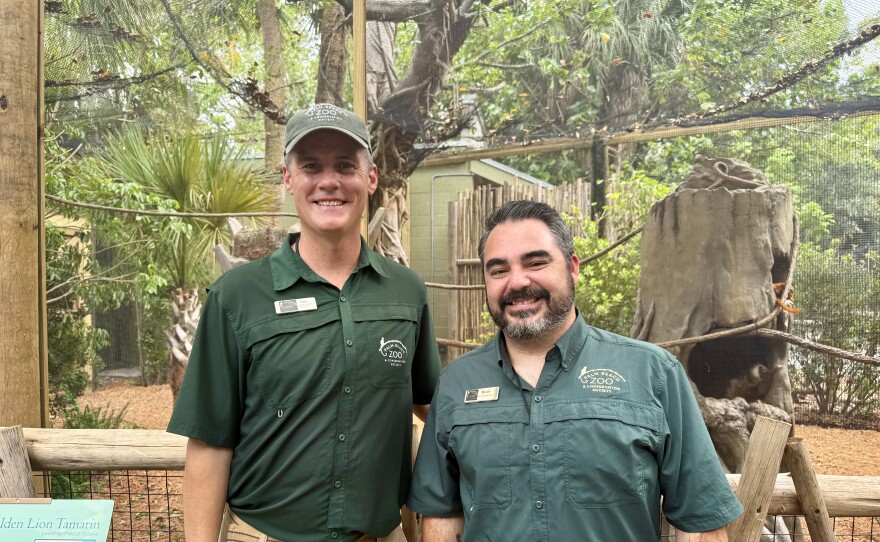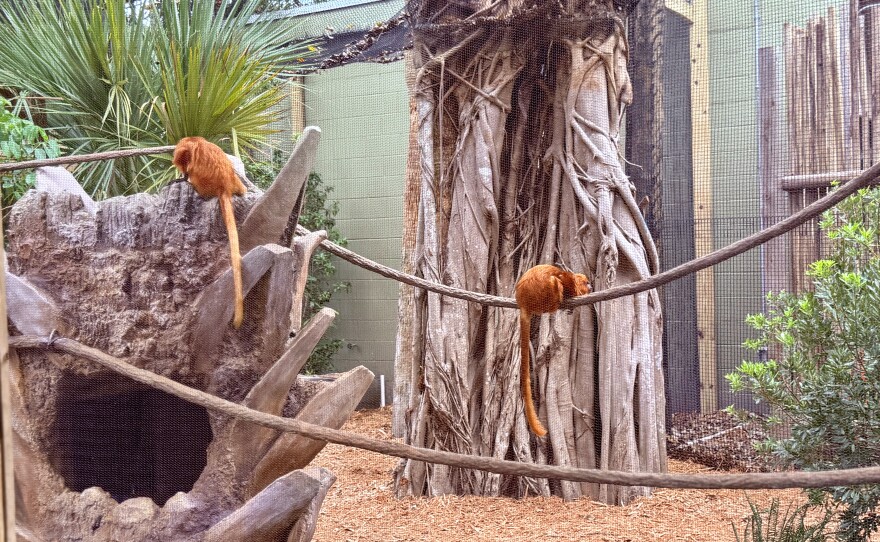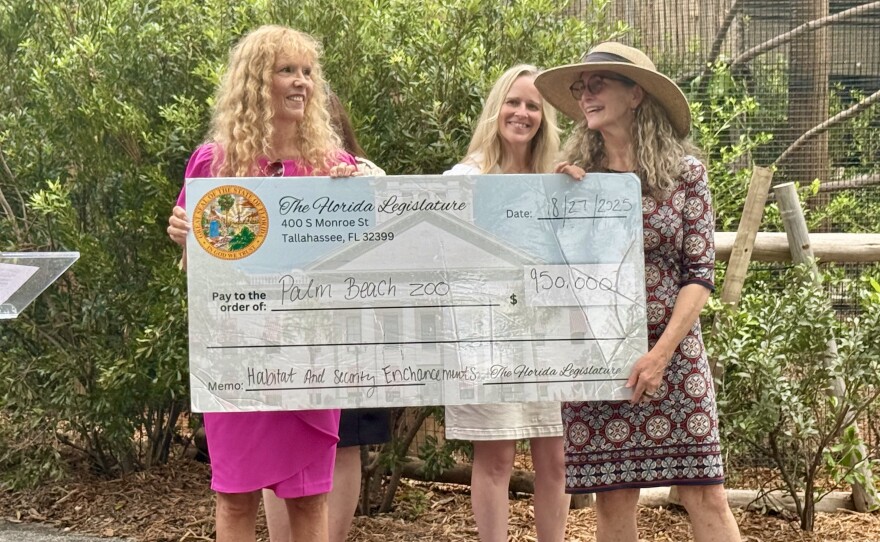The Palm Beach Zoo in West Palm Beach, home to towering trees, tigers and lemurs, unveiled a new specially designed habitat for two sloths and three endangered squirrel-sized monkeys called golden lion tamarins.
It’s part of a broader conservation effort, not just a new physical exhibit for the 25-acre zoo, said Mike Terrell, the Curator of Animal Experiences.
Terrell told WLRN the animals are part of a habitat designed to educate the public by showing what can be achieved by conservation.
“People think of the wild as something over there. But in reality, the wild is all around us and we so desperately need it,” Terrell said.
“And so when you can go home and contribute to that wild and conserve there, then you're helping everybody stay healthy and you're helping the local ecosystem.”
The new monkey habitat, situated directly across the habitat for the Lemurs primate, spans 1,728 square feet, including separate north and south enclosures, a guest viewing area and a dedicated zoo keeper space.
When you enter the habitat, you’re surrounded by the animals, coexisting on nearly all sides. On your left and right are sloths and tamarins — which are very chatty and interact across the space. The movement and sounds fully immerse guests in their natural environment.
READ MORE: Riding out a hurricane: Film captures the quiet chaos of life during a Florida storm
The Palm Beach Zoo received nearly a million dollars in state funds to support its habitat, security and conservation upgrades.
The golden lion tamarins came from a much smaller, older habitat. This new space gives them far more room to roam.
Native to the hot, muggy rainforests of Central and South America, golden lion tamarins are curious by nature and explore tiny tunnels in the zoo’s habitat specially designed for them.
“We smear things in their habitat for them to manipulate, showing off their natural behavior. We have Rosie, who’s a great mix of sassy and smart; Blitz, who is mostly obsessed with Rosie; and Gabriel, who has shown a change of personality since moving into this new habitat.”
Two of their tamarinds, Rosie and Gabriel, were actually born there 16 and 17 years ago.
The exhibit explains that the sloths' renowned slow pace of movement is to conserve energy, and that they only visit the restroom once a week, holding up to 35% of their body weight in waste at once.
In general, Clarke said zoo breeding programs like theirs have helped golden lion tamarins in the wild increase from fewer than 200 in the 1970s to over 4,800 today, raising their status from critically endangered to endangered.
Ongoing conservation efforts are “key to their survival,” Clarke said.













